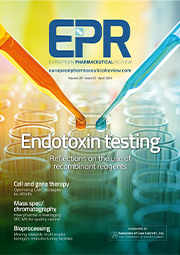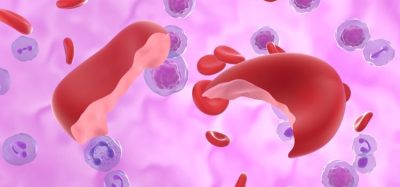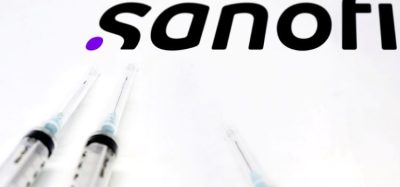Expert View: Advancing bacterial endotoxin testing with recombinant Factor C
Posted: 7 May 2019 | Karolina Heed - Global Solution Manager Endotoxins at bioMérieux | 1 comment
Emerging recombinant Factor C (rFC) methods have many advantages to offer pharmaceutical quality control, including improved specificity, robustness, efficiency and alignment with 3R principles. First, global manufacturers have validated rFC and pharmacopoeias worldwide are on the move. Here, Karolina Heed provides an industry and regulatory update.
What actions are regulatory authorities currently taking?
Recent regulatory progress in the field of rFC endotoxin testing follows a decade of development efforts to establish high‑performing methods. In September 2018, the US FDA for the first time approved a drug, Emgality from Eli Lilly (galcanezumab-gnlm), using rFC test for product release. To this end, rFC tests from two different suppliers had been extensively evaluated and compared to the LAL test, and validated according to USP chapters <1225> and <85> to replace LAL. A couple of months later, in December 2018, the European Pharmacopoeia published a world’s-first draft of a general chapter for rFC; 2.6.32. Test for bacterial endotoxins using recombinant factor C. In February 2019, the Chinese Pharmacopoeia followed suit and published a draft chapter including the recombinant alternative to LAL. In the coming months, the US Pharmacopoeia will organise a workshop that includes alternative methods to LAL.
Who supplies rFC and how do the tests work?
Currently, two global suppliers, Lonza and bioMérieux, offer end-point fluorescence rFC tests for different applications ranging from high‑throughput testing of water and in‑process samples to product release and solutions for even the most challenging sample matrices. In rFC endotoxin tests, following activation by endotoxin present in a sample, rFC cleaves a substrate, which in turn gives a quantifiable fluorescence signal. All available rFC assays follow conventional bacterial endotoxin testing (BET) methodology in terms of acceptance criteria, and thereby provide absolute comparability of results. Method standardisation is essential, as companies replace LAL with rFC and perform the required method validation, eg, according to compendia chapters.
What are the advantages of rFC?
In addition to eliminating the animal source, rFC tests, such as bioMérieux’s ENDONEXT assay range, also provide faster and easier workflows and more robust results. Lot-to-lot consistency, the exclusion of cross-reactivity with ß-glucan, and state-of-the-art sensitivity down to 0.001 EU/mL, are additional test advantages. Another important gain with rFC is the lowered rate of invalid results. In a recent evaluation study on water for pharmaceutical use, presented by Marine Marius from Sanofi Pasteur at the PharmaLab Congress in November 2018, the performance of the rFC test ENDOZYME II GO was compared with two LAL tests, including kinetic chromogenic and cartridge‑based. Marius concluded that the rFC test was a suitable method for pharmaceutical waters and high‑throughput testing. It showed very low variability between assays, best reproducibility and recovery of Control Standard Endotoxin (CSE) and Reference Standard Endotoxin (RSE), as well as the lowest rate of invalid results compared to the two LAL methods. All available data shows that rFC is a valid alternative to reagents harvested from animals in terms of purity, consistency and sustainability.
The rest of this content is restricted - login or subscribe free to access


Why subscribe? Join our growing community of thousands of industry professionals and gain access to:
- bi-monthly issues in print and/or digital format
- case studies, whitepapers, webinars and industry-leading content
- breaking news and features
- our extensive online archive of thousands of articles and years of past issues
- ...And it's all free!
Click here to Subscribe today Login here
Issue
Related topics
Analytical techniques, Assays, Biopharmaceuticals, Drug Manufacturing, Endotoxin, Endotoxin Detection, Ingredients, Regulation & Legislation, Technology









A critical point not widely addressed in this discussion is that the manufacturing and quality control of BET reagents based on naturally sourced lysate fall under the jurisdiction of the USFDA, with reagents licensed and manufactured under GMP. Alternatively, BET reagents based on recombinant precursors are specifically excluded from USFDA oversight. Recombinant based BET reagents fall through the regulatory cracks and have no required oversight body, and there are no posted manufacturing or performance standards for recombinant reagents. The comparability studies of recombinant reagents performed so far are done with reagents from well-established manufacturers where quality may be assumed, though not required. In the future with no regulatory barrier and no specific quality standards for manufacturing, other non-BET manufacturers of recombinant reagents may enter the BET market where their quality standards for those products cannot and possibly should not be trusted. Relying on recombinant reagents for endotoxin testing in absence of any manufacturing standards and performance controls presents a preventable risk to the public health.